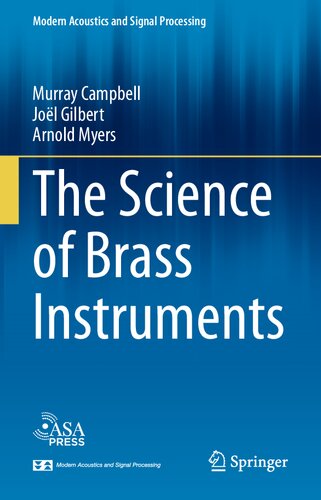

Most ebook files are in PDF format, so you can easily read them using various software such as Foxit Reader or directly on the Google Chrome browser.
Some ebook files are released by publishers in other formats such as .awz, .mobi, .epub, .fb2, etc. You may need to install specific software to read these formats on mobile/PC, such as Calibre.
Please read the tutorial at this link: https://ebookbell.com/faq
We offer FREE conversion to the popular formats you request; however, this may take some time. Therefore, right after payment, please email us, and we will try to provide the service as quickly as possible.
For some exceptional file formats or broken links (if any), please refrain from opening any disputes. Instead, email us first, and we will try to assist within a maximum of 6 hours.
EbookBell Team

4.7
66 reviewsThis book provides an in-depth account of the fascinating but far from simple actions and processes that take place when a brass instrument is played. Written by three leading researchers in brass instrument acoustics who are also experienced brass players, it draws together the many recent advances in our understanding of the subtly interrelated factors shaping the musician's control of the instrument's sound. The reader is introduced to models of sound generation, propagation and radiation. In particular, the current understanding of the behaviour of the player's lips, the modes of vibration of the air column inside the instrument, and the radiation of sound from a brass instrument bell are explained. The functions of the mouthpiece and of mutes are discussed. Spectral enrichment arising from nonlinear propagation of the internal sound wave in loud playing is shown to be an important influence on the timbre of many types of brass instrument. The characteristics of brass instruments in contemporary use (including cornets, trumpets, french horns, trombones and tubas) are identified, and related to those of the great variety of instruments at earlier stages in the evolution of the brass family. This copiously illustrated book concludes with case studies of the recreation of ancient instruments and some of the current applications of electronics and information technology to brass instrument performance. While most of the material presented is accessible by a general readership, the topic of musical instrument modelling is developed at a mathematical level which makes it a useful academic resource for advanced teaching and research.